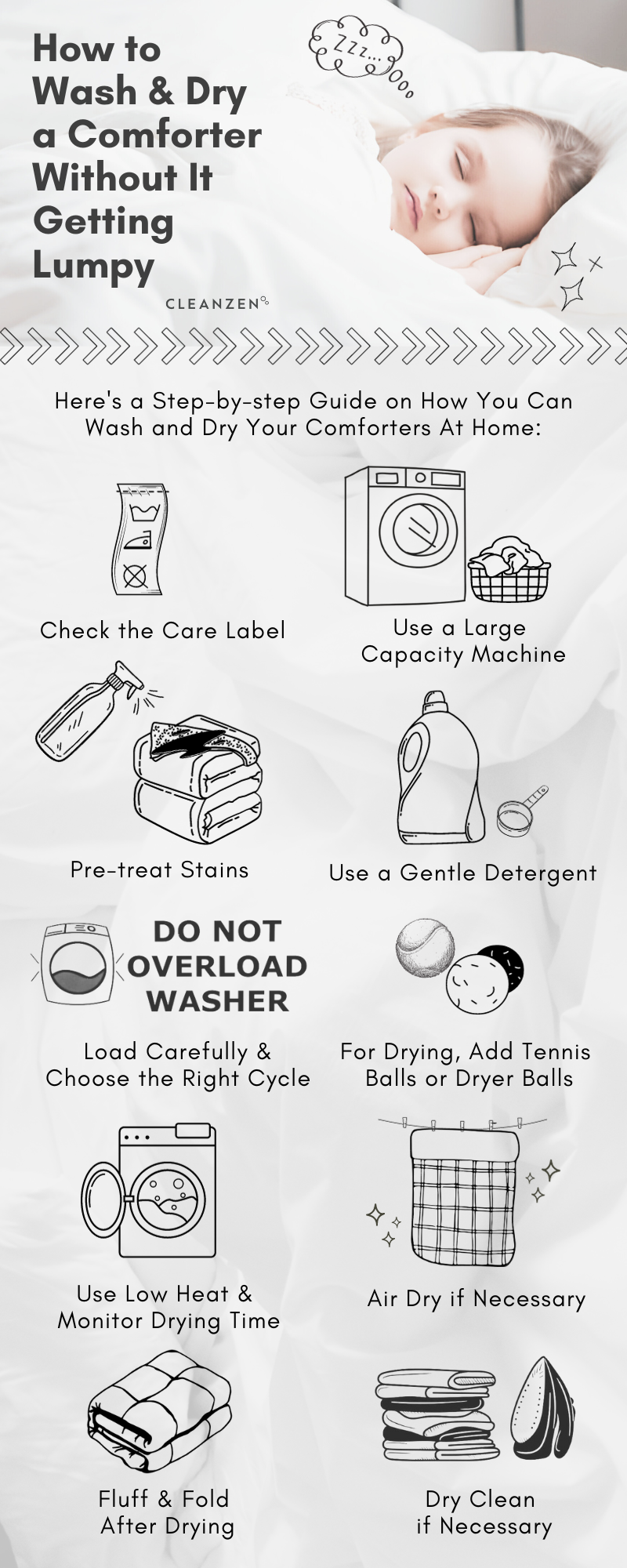
Snuggling under a warm, fluffy comforter traps the warmth of your body for a comfortable night’s sleep. Eventually, though, you’ll need to learn how to clean your comforter. To do so, take a minute to look for the care tag to find out about the fiber content.
Most comforters or duvet inserts can be washed at home, but some have outer coverings that require dry cleaning. If the comforter is washable, follow the steps below to wash the comforter at home or your local laundromat. Here’s how to wash and dry a comforter so you can sleep soundly tonight under clean and cozy bedding.
How Often Do You Wash Comforters?

We always get this common question: How often should you wash your comforters? Unless you spill something or use your comforter without a barrier layer like a sheet, cleaning your comforter 2-4 times per year should be enough.
If your comforter is seasonal, it’s recommended you go through the cleaning process and always wash before and after each storage. However, a duvet cover or blankets that come in direct contact with skin should be washed more often.
Can You Wash a Comforter in a Washing Machine?
In most cases, down-filled comforters are filled with synthetic down alternatives are easy to clean and dry at home, especially if you have a spacious washing machine. If you don’t have a large-capacity washer, head to your local laundromat.
A smaller household washer could compress and distort the filler. You can also wash a comforter by hand in the bathtub, but the comforter will become very heavy and can take several days to dry.
For down comforters, the feathers are a bit more temperamental than synthetic poly-fill. Always use a mild detergent or downwash to prevent stripping the natural oils from the feathers.
How To Wash A Comforter
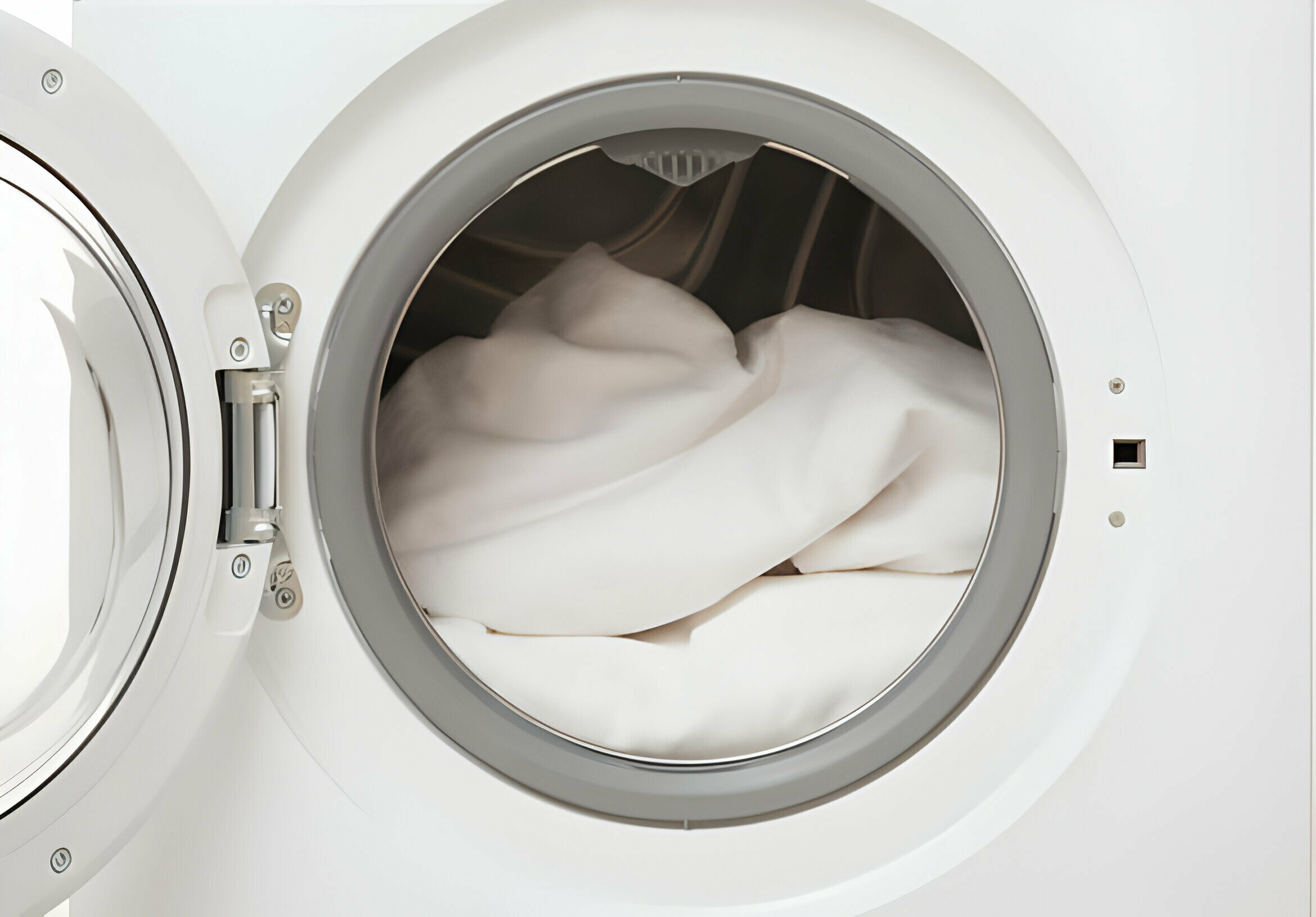
Washing a comforter requires careful handling to ensure it stays clean and retains its shape. Learn how to wash and dry comforters using your own washer and dryer at home or wash it by hand.
How To Wash Down Comforters
- First, check the care label. Comforter’s care labels provide important information on how to properly clean and care for the specific fabric and filling.
- Then proceed with pretreating any stains before washing. Then select the gentle wash cycle and cold water setting on a using a large capacity washer.
- Add just two to three teaspoons of mild detergent to the washer drum or detergent drawer. Do not use any type of fabric softener. It can damage the feathers.
- Load the comforter, wash the comforter by itself to prevent excessive wrinkling or lint transfer.
- When the cycle is complete, do an extra rinse cycle to help ensure that all of the detergent residue is removed from the down. Remove the comforter from the washer and give it a good shake.
- Place the comforter in an automatic dryer with several wool dryer balls. Dry on low heat and remove it from the dryer every 15 minutes to manually break up any clumps of feathers. It can take a couple of hours to completely dry.
- If you do not have an automatic dryer, spread the comforter over a drying rack. Place it in a warm room and add a circulating fan to speed drying. Fluff the comforter often to break up clumps and turn it frequently for even drying.
Washing Down Alternative Comforters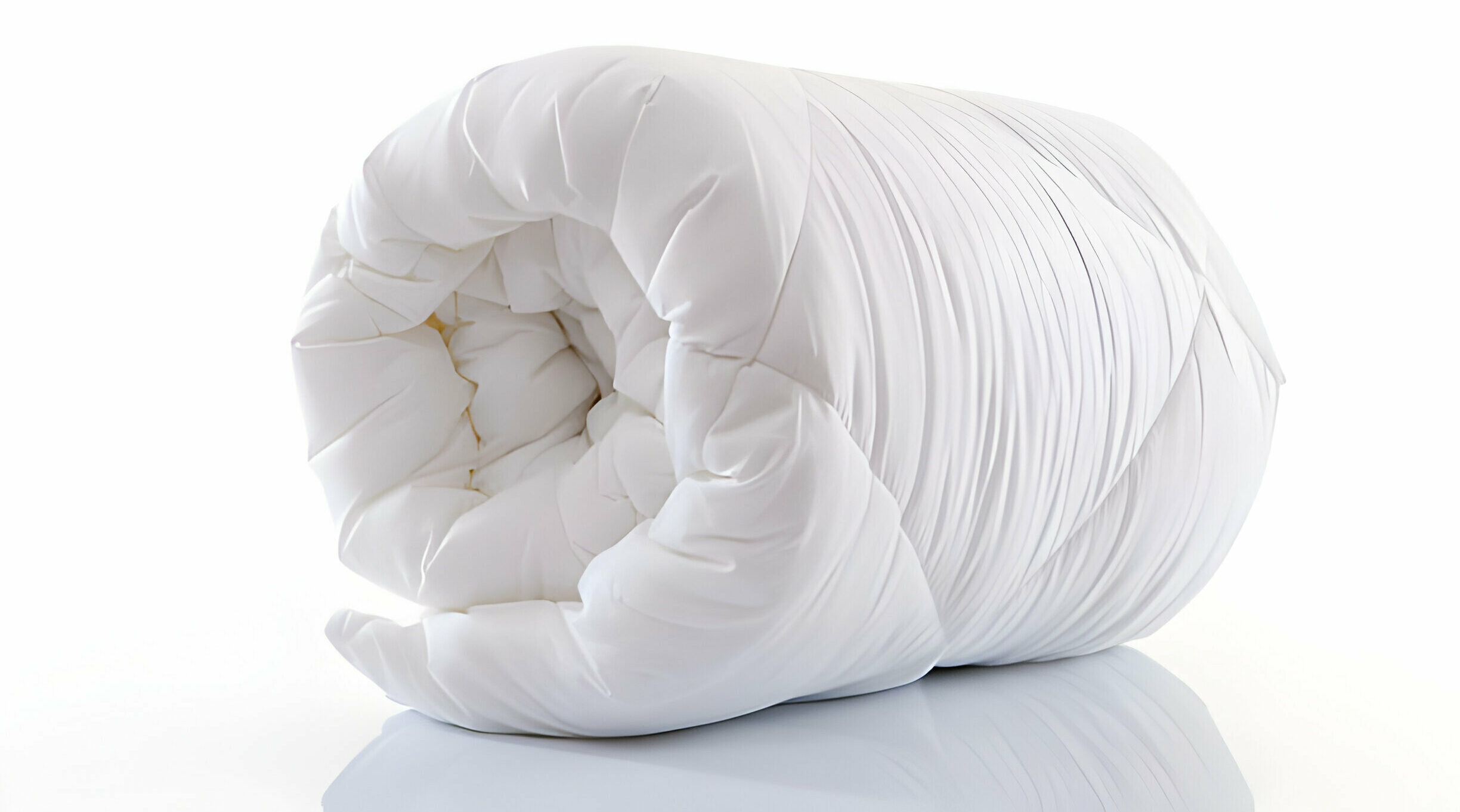
- After pretreating the stains, select the gentle cycle and cold or warm wash temperature on the washer. If you do not have a large capacity washer, use a commercial washer at your local laundromat to prevent overloading your washer. The comforter needs room to move through the water in the washer to get clean.
- Add your regular detergent to the drum or distribution drawer of the washer. Use no more than 2 teaspoons of a high-efficiency detergent or one laundry detergent pod. Excess suds and detergent residue are difficult to remove from the comforter’s filling.
- Pour 1/2 cup distilled white vinegar into the fabric softener distribution drawer or add it during the final rinse to help remove any detergent residue.
- Wash it alone to prevent excessive wrinkling and lint from other fabrics. After the washer cycle is complete, remove the comforter and give it a good shake to help remove wrinkles.
- Place the comforter in an automatic dryer with a few wool dryer balls. The dryer balls will help fluff the interior filling. Dry the comforter on medium-low heat.
- You can also hang the comforter from a clothesline or drape it over a drying rack. If air-drying, shift and fluff the comforter every few hours to help redistribute the filling fibers.
- Do not place the comforter back on the bed or store it until it is fully dry.
Washing Comforters By Hand
Washing your comforter at home may be simplest using a large capacity washer and dryer, but for those without front or top load washing machine, and without access to a laundromat, a bathtub can be used. If hand washing is the best available option, follow the steps below to wash your comforter in the tub:
- Fill half of your tub with cold or warm water.
- Pour a cap of mild laundry detergent into the water and mix it in with your hand.
- Immerse your comforter and gently swirl it through the water.
- Let your comforter soak for 10 minutes.
- Gently press your comforter down to release soap from the fabric and filler.
- Drain the tub, then rinse your comforter with warm water to remove excess soap.
- Gently squeeze your comforter, or press it down, to remove excess water. Don’t wring it out, since wringing can damage the filling.
- Hang your comforter dry.
Drying Your Comforter
- Bulky bedding like a comforter needs room to move around for uniform drying. If possible, dry your comforter on a cycle designed for bulky items and customize the cycle to dry with low or no heat, unless the care label says otherwise. Add two or three dryer balls to the load so that the filling moves around as it dries. This allows warm air to circulate more efficiently which may help reduce drying time. It may be best to avoid using dryer sheets that contain fabric softener, but this varies by material type, so be sure to reference your comforter’s tag before you add any to the load.
- Keep the load balanced, remove the comforter from the dryer every half hour or so and fluff to redistribute the filling. Return to the dryer and continue the cycle until it is dry. Some dryers monitor inside moisture and air temperatures to help loads get evenly dry.
- When the comforter feels almost dry, allow it to hang so that fresh air can circulate it for a few hours, and ensure that the comforter is dry completely before putting it on the bed.
How to Keep Your Comforter Clean Longer

- Use a removable duvet cover on your comforter and wash it regularly.
- Always use a top sheet, which serves as a barrier between you and your comforter. A sheet is much easier and quicker to wash than a comforter.
- Flip the comforter often to allow trapped moisture in the filling to thoroughly dry after each use.
- Freshen the comforter between washings by hanging it on an outside clothesline on a breezy, sunny day.
- Place the comforter in an automatic dryer on air-only between washings to remove dust and crumbs.
- Use a fabric refresher spray between washes to help remove odors. Spray the comforter on both sides.
- Blot spills and stains immediately to prevent them from seeping into the comforter filling.
- Keep pets off the bed.
- Avoid eating or drinking in bed.
FAQs
What are common mistakes people make when washing their comforter?
Some forget to tend to comforter stains before throwing their comforter or duvet cover into the washing machine. It’s a good idea to spot clean and pretreat stains using the recommended cleaning detergent as an initial step in the washing process. This can effectively break or loosen these stains from the comforter, allowing the stain to be easily removed.
Check for loose threads or torn seams, and stitch or repair any found on the comforter with a needle and thread to prevent further damage to the comforter. Use a gentle, fragrance-free detergent, especially for down or sensitive materials, to maintain the integrity of the comforter and avoid skin irritation for those with sensitivities.
It’s important to know and be mindful of the water temperature and cycle settings according to the care label instructions, as hot water or aggressive cycles can shrink or damage certain fabrics. When it comes to drying it bears repeating that you don’t want to put a moist comforter on your bed or in storage. If storing, do so in a breathable bag and ensure the comforter is fully dry before storage to prevent mildew growth.
How do you smooth out a lumpy comforter?
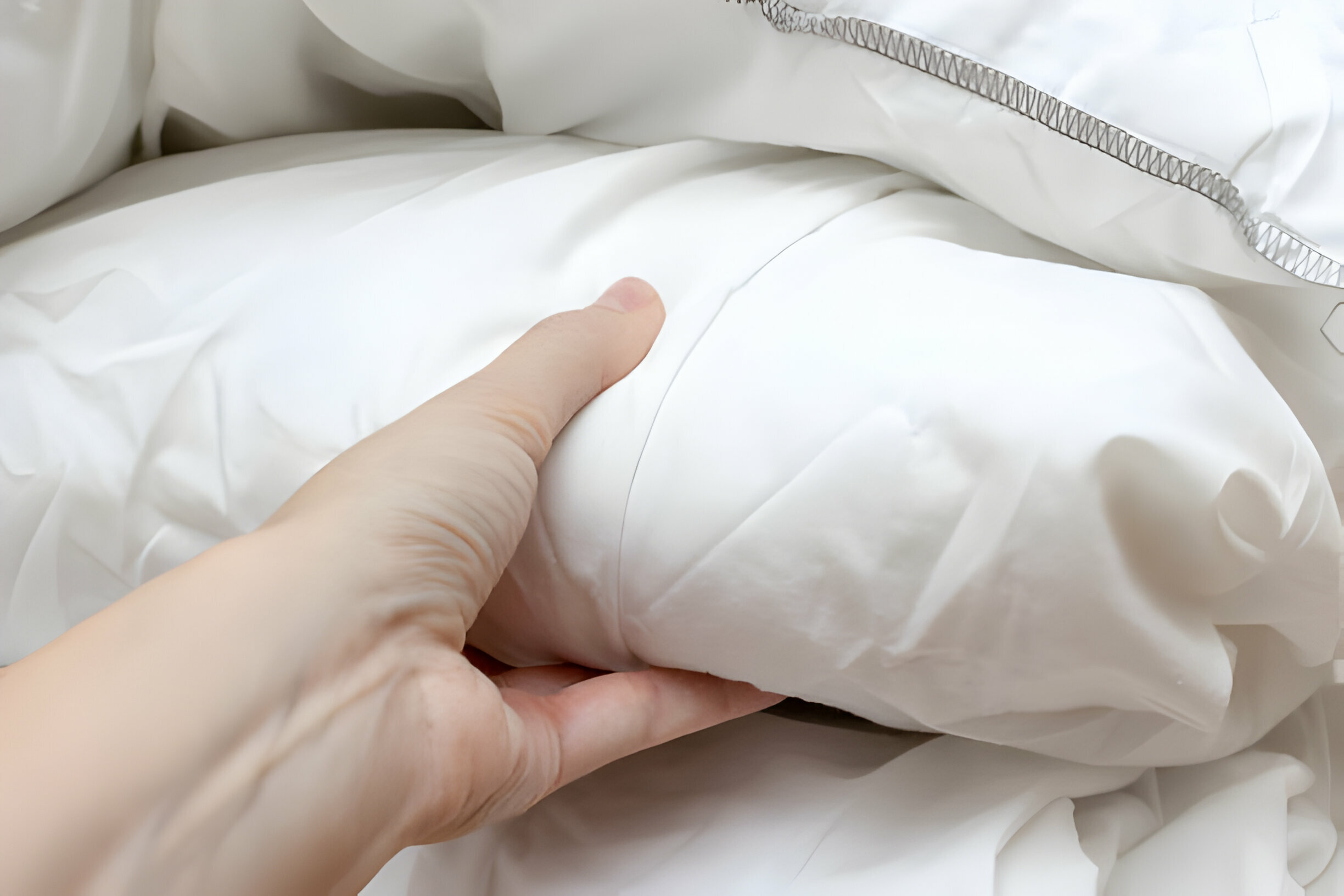
There are a few ways to do this. First, try holding it by the edges and shaking it out. If that doesn’t work, lay the comforter flat and use your fingers or the palms of your hands to massage the filling and break up the clumps. A third option is to hang it over a clothesline in the backyard. Gravity and the wind moving through the comforter will naturally readjust the filling.
Should you take your comforter to the dry cleaner?
Comforters, especially those made of delicate materials like wool, silk, cashmere, or down, often require dry cleaning rather than machine washing. Dry cleaning uses chemical solvents that are gentler on fabrics and prevent shrinking and warping.
For more tips and tricks from your favorite cleaning services in Boston, be sure to follow our blog full of cleaning helpful hacks and DIYs for around the house. You can also browse and book your own services from our team for your home or apartment. We’re here to help you keep your home happy and healthy all year long!
The post How to Wash and Dry a Comforter Without It Getting Lumpy appeared first on Cleanzen.
from Cleanzen https://cleanzen.com/blog/how-to-wash-comforter/
via IFTTT
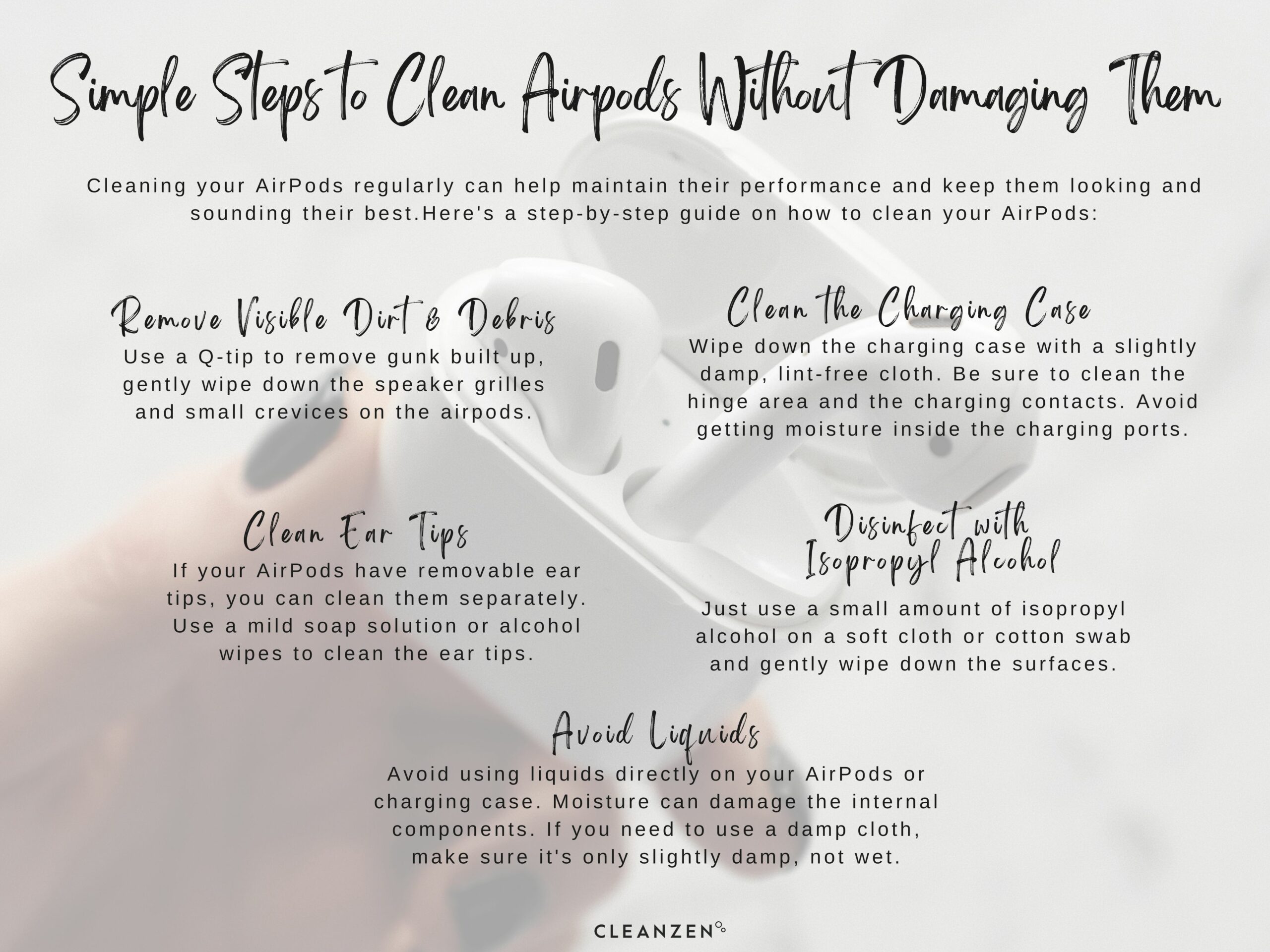
No comments:
Post a Comment